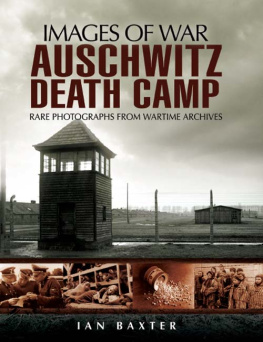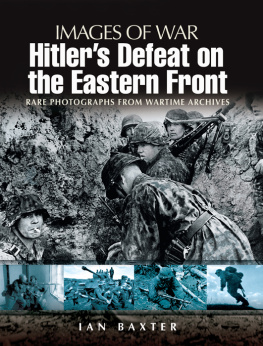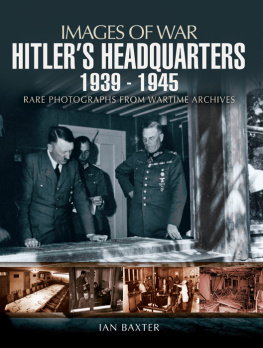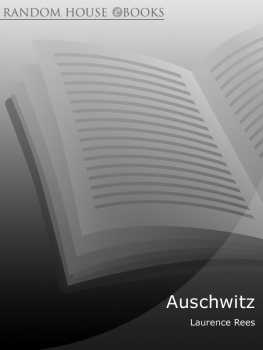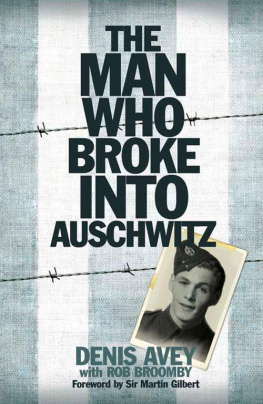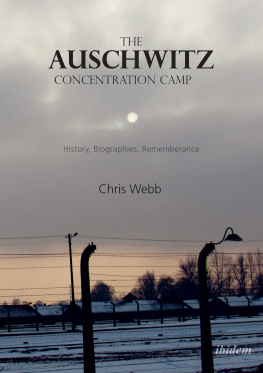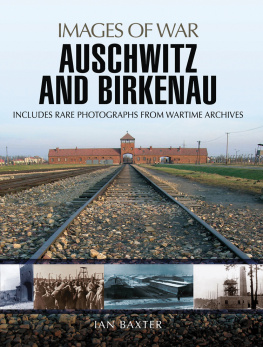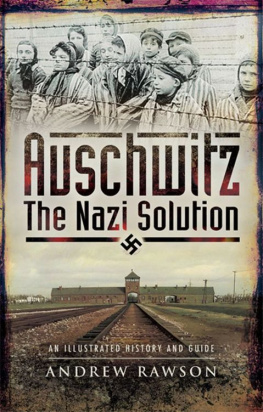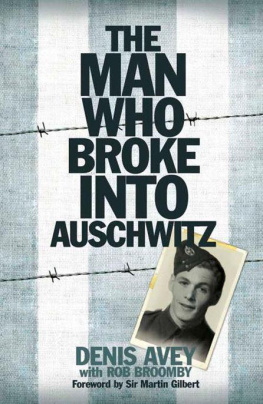
First published in Great Britain in 2009
and reprinted in 2010 by
PEN & SWORD MILITARY
an imprint of
Pen & Sword Books Ltd,
47 Church Street,
Barnsley,
South Yorkshire.
S70 2AS
Copyright Ian Baxter, 2009, 2010
A CIP record for this book is available from the British Library.
ISBN 978 1 84884 072 0
Digital Edition ISBN: 978 1 84468 882 1
The right of Ian Baxter to be identified as Author of this Work
has been asserted by him in accordance with the Copyright,
Designs and Patents Act 1988.
All rights reserved. No part of this book may be reproduced or
transmitted in any form or by any means, electronic or mechanical
including photocopying, recording or by any information storage and
retrieval system, without permission from the Publisher in writing.
Printed and bound by CPI UK
Pen & Sword Books Ltd incorporates the Imprints of
Pen & Sword Aviation, Pen & Sword Maritime,
Pen & Sword Military, Wharncliffe Local History, Pen & Sword
Select, Pen & Sword Military Classics and Leo Cooper.
For a complete list of Pen & Sword titles please contact
Pen & Sword Books Limited
47 Church Street, Barnsley, South Yorkshire, S70 2AS, England
E-mail:
Website: www.pen-and-sword.co.uk
Introduction
The concentration camp at Auschwitz-Birkenau was the location of the single largest mass murder in history. Over one million men, women, and children were brought to this death camp and murdered in the gas chambers. Others, however, died a more slow painful death as the ravages of disease and starvation took a hold.
Auschwitz Death Camp, is a chilling highly illustrated record of those that were sent to the camp to work and be murdered. It chronicles those that actually run the camp and vividly describes in detail using some 250 photographs together with detailed captions and accompanying text, how Auschwitz evolved from a brutal labour camp at the beginning of the war, to a factory of death.
Each chapter gives a highly accurate portrait of how people lived, worked and died in the Auschwitz Death Camp. It describes the men who conceived, created, and constructed the killing facility, and how the camp became the centrepiece for a vast labour pool for various industrial complexes erected around Auschwitz.
Auschwitz Death Camp provides a unique insight into a camp where over sixty-three-years ago was separated from the outside world. Only through illustrated records will the reader realize the magnitude of horror that was inflicted on innocent men, women and children.
[The views or opinions expressed in this book and the content in which the images are
used, do not necessarily reflect the views or policy of, nor imply approval or endorsement by
the United States Holocaust Memorial Museum.]
The Author
Ian Baxter is a military historian who specialises in German Twentieth Century military history. He has written more than twenty books including Wolf Hitlers Wartime Headquarters, Poland The Eighteen Day Victory March, Panzers In North Africa, The Ardennes Offensive, The Western Campaign, The 12th SS Panzer-Division Hitlerjugend, The Waffen-SS on the Western Front, The Waffen-SS on the Eastern Front, The Red Army At Stalingrad, Elite German Forces of World War II, Armoured Warfare, German Tanks of War, Blitzkrieg, Panzer-Divisions At War, Hitlers Panzers, German Armoured Vehicles of World War Two, Last Two Years of the Waffen-SS At War, German Soldier Uniforms and Insignia, German Guns of the Third Reich, Defeat to Retreat: The Last Years of the German Army At War 1943 1945, Operation Bagration the destruction of Army Group Centre, German Guns of the Third Reich, Rommel and the Afrika Korps, the Sixth Army and the Road to Stalingrad, U-Boat War, and most recently, Hitlers Eastern Front Headquarters Wolfs Lair 1941 1945. He has written over one hundred journals including Last days of Hitler, Wolfs Lair, Story of the V1 and V2 rocket programme, Secret Aircraft of World War Two, Rommel At Tobruk, Hitlers War With His Generals, Secret British Plans To Assassinate Hitler, SS At Arnhem, Hitlerjugend, Battle Of Caen 1944, Gebirgsjger At War, Panzer Crews, Hitlerjugend Guerrillas, Last Battles in the East, Battle of Berlin, and many more. He has also reviewed numerous military studies for publication, supplied thousands of photographs and important documents to various publishers and film production companies worldwide, and lectures to various schools, colleges and universities throughout the United Kingdom and Southern Ireland.
Acknowledgments
It is with the greatest pleasure that I use this opportunity on concluding this book to thank those who helped make this volume possible. My expression of gratitude first goes to Wojciech Posa,
Head of the Auschwitz-Birkenau State Archive, who gave generously his time whilst I sifted through many hundreds of images at the Auschwitz museum during a number of visits between 2006 and 2008.
I wish to also thank the staff of the United States Holocaust Museum. The archive has been an unfailing source; supplying me with a number of photographs that were obtained from numerous sources, including obtaining images from a rare SS photograph album of the Nazi leadership at Auschwitz. This 1944 album belonged to and was created by SS-Obersturmfhrer Karl Hcker, the adjutant to the commandant of Auschwitz, SS-Sturmbannfhrer Richard Baer. Hcker was stationed at Auschwitz from May 1944 until the evacuation of the camp in January 1945. The photographs show Hcker with other SS officers in Auschwitz in the summer and autumn of 1944, and provide the reader with a new understanding of their lives and activities of the camp. Other images supplied by the United States Holocaust Museum include a photograph album known as the Auschwitz album. The original owner of the album, was Lili Jacob (later Zelmanovic Meier), who was deported with her family to Auschwitz in late May 1944 from Bilke (today: Bilki, Ukraine), a small town near Berehovo in Transcarpathian Rus which was then part of Hungary. They arrived on May 26, 1944, the same day that professional SS photographers photographed the arrival of the train and the selection process. After surviving Auschwitz, forced labour in Morchenstern, a Gross-Rosen subcamp, and transfer to Dora-Mittelbau where she was liberated, Lili Jacob discovered an album containing the Auschwitz photographs in a drawer of a bedside table in an abandoned SS barracks while she was recovering from typhus. After the war she brought the original album with her when she immigrated to the United States, and these images were used as part evidence at the Frankfurt Auschwitz Trial (in which Lili Jacob testified and in which Karl Hcker was a defendant). In 1983, Lili Jacob donated the album of photographs of her transports arrival in Auschwitz to the Yad Vashem Museum.
I wish also to thank my friends Chandran Sivanson and Kevin Bowden for spending time with me whilst researching at Auschwitz. A very warm thank you to Chandran for providing some of the images for this book, one of which appears on the front cover.
Chapter One
Evolution of Auschwitz
The town of Auschwitz (Oswiecim) was situated in a remote corner of south-western Poland, in a marshy valley where the Sola River flows into the Vistula about thirty-five miles west of the ancient city of Krakow. The town was virtually unknown outside Poland and following the occupation of the country Oswiecim was incorporated into the
Next page
